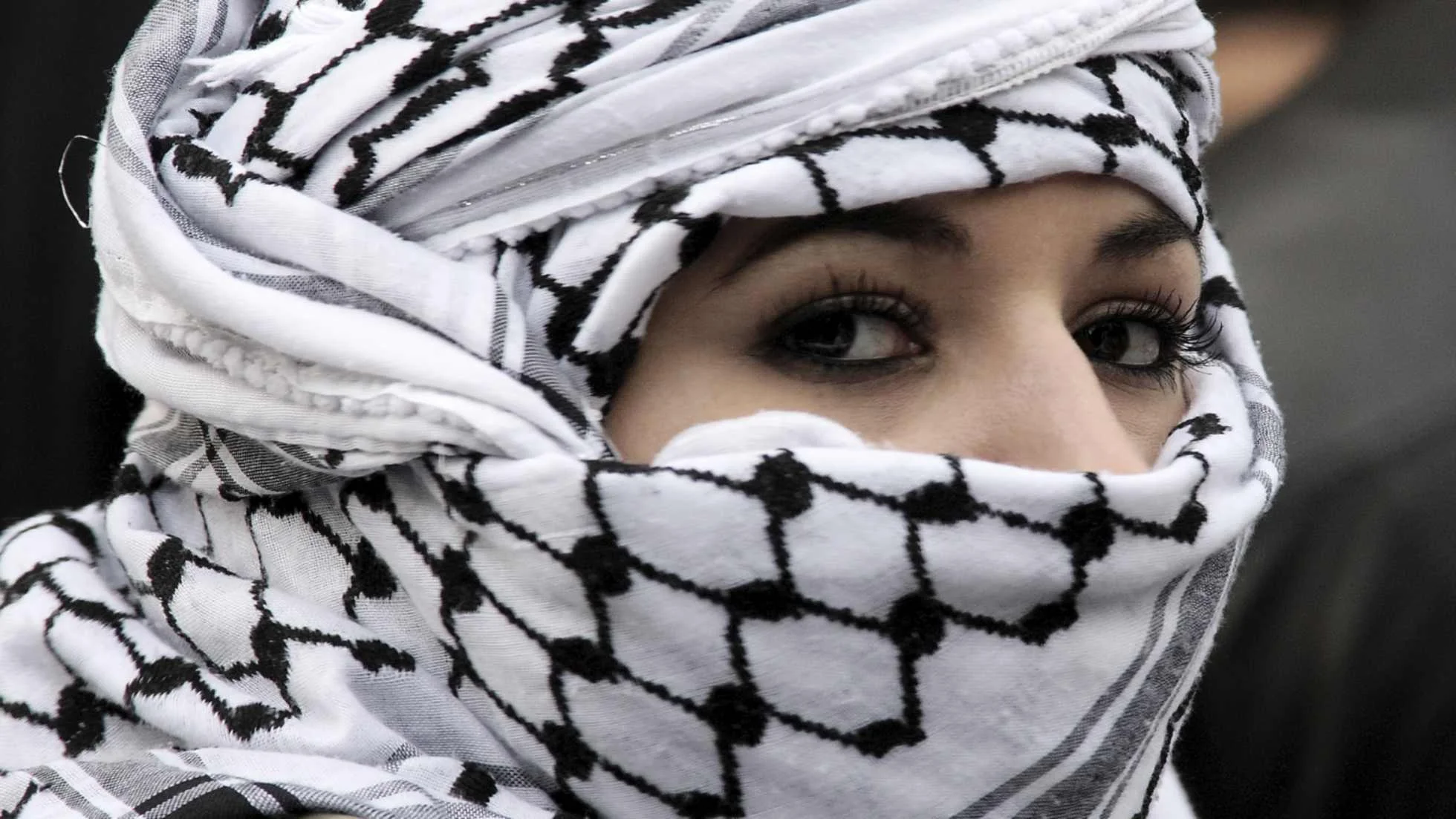The Palestinian Keffiyeh, which is called “kufiyah,” has a history that goes back to around 3100 BCE in ancient Mesopotamia. It was first used as a simple head covering for guarding against the extreme desert weather and worn by different groups living near Tigris and Euphrates River Valley.
It changed and became a sign of honor and position, especially for the upper class people. At the same time, lower class members also liked it. Palestinian farmers as well as city inhabitants started using this dish too.
In olden times, the Palestinian Keffiyeh was commonly made with materials like cotton and wool. Bedouins and villagers often wore it as a useful item to shield themselves from the sun and other natural forces while working in fields for instance.
The Keffiyeh During the Arab Revolt (1936-1939)
During the period of 1936 to 1939, the Arabs were in rebellion against British rule in what is termed as the Arab Revolt, it is at this time that the wearing of the scarf known as the keffiyeh assumed considerable importance mainly as a symbol of Palestinian nationalism and unity.
The Palestinian Keffiyeh was not just for the head only but for when they attempted to mask their identity when protesting against British rule.
When authority figures in Britain attempted to restrain people from draping it, the Keffiyeh became a massive representation for many.
Yasser Arafat and the Globalization of the Keffiyeh
Yasser Arafat, the well-known leader of the Palestine Liberation Organization, greatly helped to spread the Palestinian Keffiyeh around the world as a symbol that represents Palestinian identity and struggle for freedom.
He rarely appeared without his unique black-and-white checkered scarf hanging on his right shoulder; this made it his personal sign that people could recognize him by.
Adopting the Palestinian Keffiyeh and showing it in a way that looks like the map of Palestine before 1948, Arafat made it a symbol of Palestinian nationalism and their hopes for becoming an independent country.
He notably wore the Palestinian Keffiyeh on big international events, especially after the Israeli leaders stopped using the Palestinian flag for almost thirty years (1967-1993), which made the scarf an important emblem that brought together all Palestinians around the world.
Patterns and Symbolism of the Keffiyeh
The Palestinian Keffiyeh designs are unique and every single design of the Keffiyeh means something in Palestinian culture. The ‘fishnet’ holes signify the connection of Palestinians and the roughness; it narrates how much Palestinians are able to work around.
“The Waves” are normally represented as the olive leaves symbolizing strength, the close association with the land and liberty. This must go a long way in benefiting Palestinians especially those who live most especially away from the sea.
The term “bold lines” is used to describe the ancient track ways that crossed through Palestine, thus pointing to the region’s golden age.
These connected designs on the material are a narrative of the Palestinian people and their traits, difficulties and even possibilities.
Cultural Significance Beyond Palestine
The Palestinian Keffiyeh, which began as a simple headscarf in Arabic countries, has become a strong sign of freedom and togetherness in many worldwide movements and communities.
Support for the cause of Palestine has become more and more popular, and this has led to the adoption of the Palestinian Keffiyeh by supporters around the world. This headscarf is now used as a clear sign of unity when people participate in protests and public gatherings.
Its strong black-white pattern, connected to Palestinian identity, speaks to bigger ideas about standing against unfairness and working for people’s rights.
In the last several years, the keffiyeh has been more and more seen in protests at universities and social movements.
The Keffiyeh in Contemporary Activism
The Palestinian Keffiyeh has become well-known in today’s protests and social movements, especially as a sign for standing with the Palestinian cause.
Its unique pattern of black and white is now frequently seen at gatherings all over the world, from places of learning in the United States to marches in Europe and Australia, where people wear the Palestinian Keffiyeh to show their backing for Palestinian rights.
Many well-known people like actors, singers, and public famous figures have worn the keffiyeh as a symbol of politics.
Mohammed Assaf, a famous singer from Palestine, along with other important activists, use it at public events. This helps show its connection to fighting and cultural pride.
Controversies Surrounding the Keffiyeh
The Palestinian Keffiyeh has gotten much criticism and been misinterpreted in Western areas, especially since people are more supporting the Palestinian cause now.
In France, for example, it’s not allowed to have pro-Palestinian protests, and people have been given fines for putting on the keffiyeh. The officials have called this a danger to public peace.
In the same way, in Berlin which is a city in Germany, the schools have banned the keffiyeh. They have these worries about keeping peace.
In the United States, some violent incidents have happened, like an attack in Brooklyn where a father was attacked. The father was wearing a keffiyeh, showing the danger for those who stand with Palestinians.
The Palestinian Keffiyeh carries significant symbols expressing ideas of opposing self-identity and unity. It continues to motivate movements globally and opens up discussions on cultural appropriation without misunderstandings involved in this.

